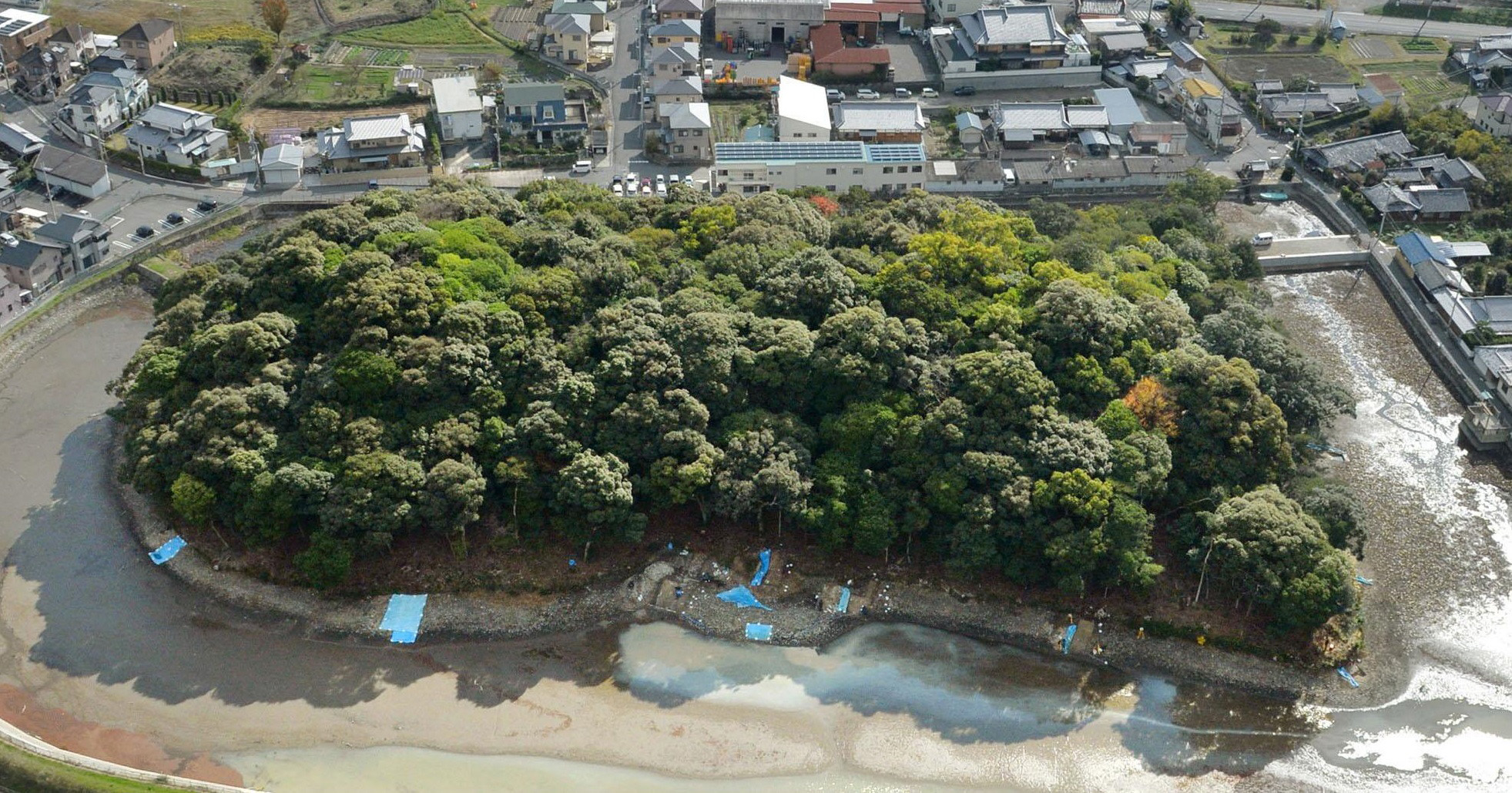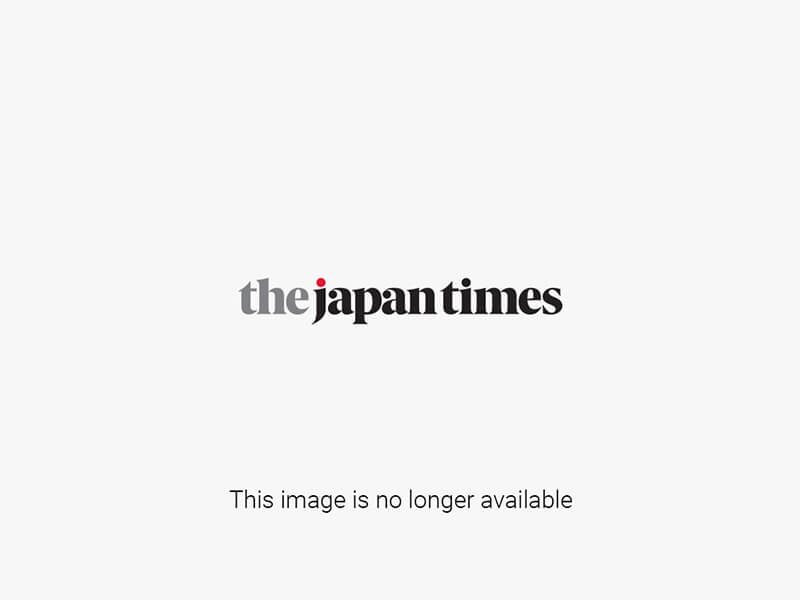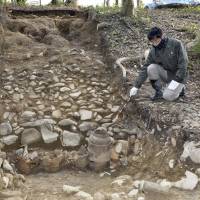As part of measured steps toward greater openness, a department of the Imperial Household Agency on Friday guided academics and reporters around a hitherto off-limits megalithic burial mound near Osaka Bay.
Dating from the late fifth century, Tannowa Nisanzai Kofun is an earth mound surrounded by a moat and measuring 170 meters long. Seen from the air, it has the shape of a keyhole.
It has been largely out of bounds to visitors until now because it is classed as a royal burial site. The Imperial Household Agency designates it as "Udonohaka," or the grave of Inishiki Iri Hikono Mikoto, the son of 11th Emperor Suinin Tenno.
"Kofun," as the massive burial mounds are called, were built in considerable numbers between the early third and early seventh centuries. The Imperial family and other members of the ruling classes constructed them as symbols of their power.
The tombs are valuable resources for historians studying the ancient history of Japan, as important cultural properties such as clay pots and accessories buried with the body for ceremonial purpose are often found during excavation.
But tombs built for the Imperial family are designated by the Imperial Household Agency as "ryobo." It prevents entry by the general public to conserve the grave's "serenity and dignity."
The agency has been conducting its own maintenance work on tombs nationwide since 1967. Amid criticism from academics about their exclusion, it recently eased the restrictions on archaeological research.
Some academics dispute the agency's designation of Tannowa Nisanzai Kofun as an Imperial grave. They believe it was built for a chief in the Kii area, present-day Wakayama Prefecture, who was believed to be the contemporary equivalent of a maritime shipping magnate.
The agency believes Tannowa Nisanzai Kofun may need preservation work to protect it from erosion around the moat.





